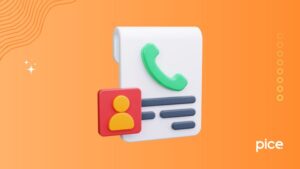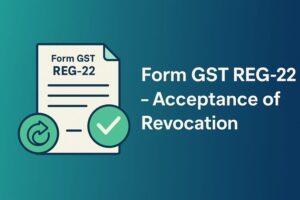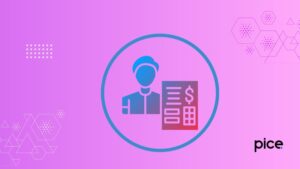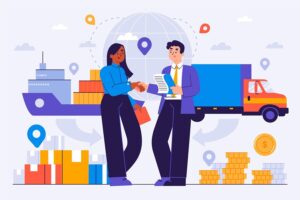Assessment under GST
- 15 Aug 24
- 14 mins

Assessment under GST
Key Takeaway
- Assessment under GST is a crucial process that ensures compliance and accuracy in tax reporting by verifying the correctness of the tax liabilities declared by businesses.
- The GST regime provides multiple types of assessments, including self-assessment, scrutiny, provisional, and best judgment assessment, to cover various taxpayer circumstances and ensure comprehensive tax compliance.
- Provisional assessment allows taxpayers to pay tax on a provisional basis when they are unsure of the taxable amount, ensuring continuous compliance without delays in tax payments.
- Scrutiny assessment serves to verify the accuracy of GST returns filed and can lead to further investigation if discrepancies are not satisfactorily explained, safeguarding against tax evasion.
- Best judgment assessment is employed for non-filers or unregistered persons, estimating their tax liabilities based on available data to enforce compliance and protect revenue interests.
What is Assessment under GST?
Assessment under GST is the process used by tax authorities to determine the tax liability of a taxpayer. This process ensures that every business complies with the GST law and accurately reports their tax obligations. It involves a detailed examination of the taxpayer's returns and related financial documents to verify that the correct amount of tax has been paid and that all GST procedures have been followed properly. The goal of assessment is to prevent tax evasion, under-reporting of taxes, and to maintain a transparent and efficient tax administration system.
Procedure for Assessment under GST

The procedure for assessment under GST is structured to ensure thorough scrutiny and fairness in the calculation of tax liabilities. Here are the key steps involved in the assessment process:
- Self-Assessment: Every registered taxpayer is required to self-assess their taxes payable and furnish a return for each tax period. This is the primary form of assessment under GST.
- Scrutiny of Returns: The tax authorities may scrutinize the return and related particulars furnished by the taxpayer to verify the correctness of the return. This involves checking if the right amount of tax has been paid and if any information seems inconsistent or incorrect.
- Provisional Assessment: If a taxpayer is unable to determine the value of goods or services or the rate of tax applicable, they may request a provisional assessment. The tax officer will then make a provisional estimate of the tax due based on the information provided.
- Summary Assessment: In urgent cases where there is evidence suggesting a tax liability and delay could harm tax revenue, an officer may conduct a summary assessment without giving notice to the taxpayer.
- Best Judgment Assessment: If a taxpayer fails to comply with the return requirements, the tax officer may make an assessment based on their best judgment using available information.
- Audit Assessment: Tax authorities conduct an audit of the taxpayer either at their place of business or in their office. Based on the audit findings, an assessment is made to ensure compliance.
- Final Assessment: In cases where provisional assessments were made, a final assessment is carried out after the relevant information for determining the correct tax liability is obtained.
These steps are designed to cover different scenarios and provide multiple checks against evasion and underpayment of tax, thereby ensuring fairness and compliance with the GST regulations.
Provisional Assessment
Provisional assessment under GST is a mechanism that allows taxpayers to pay tax on a provisional basis in cases where they are unable to determine the exact tax liability. This provision is particularly useful when there is uncertainty about the applicable tax rate or the value of goods and services. It helps taxpayers to comply with the tax laws without causing delays in tax payments and business processes.
Procedure for Provisional Assessment
The procedure for obtaining a provisional assessment under GST involves several steps:
- Request Submission: The taxpayer must submit a written request to the GST officer, expressing the need for a provisional assessment. This request should clearly state the reasons why the taxpayer is unable to determine the exact tax liability.
- Execution of Bond: Along with the request, the taxpayer is required to execute a bond with a security or surety, promising to pay the difference between the provisionally assessed tax and the final tax liability.
- Issuance of Order: On receiving the request, the GST officer reviews the case and issues an order allowing the payment of tax on a provisional basis. The order specifies the rate or value at which the tax is to be calculated.
- Payment of Tax: The taxpayer must then pay the tax based on the terms specified in the provisional assessment order.
Interest Payable for Provisional Assessment
Interest is a critical component when it comes to provisional assessments:

- When the Final Tax is More: If the final tax liability determined after the regular assessment is greater than the tax paid on a provisional basis, the taxpayer is liable to pay interest on the shortfall. The interest is calculated from the date of payment of the provisional tax till the date of payment of the final tax liability.
- Rate of Interest: The interest rate is typically prescribed by the government and is subject to changes based on the policy decisions. It is important for taxpayers to keep updated with the latest rates to calculate their liabilities accurately.
This system of provisional assessment followed by the adjustment of differences ensures that businesses can operate smoothly without disruptions due to tax uncertainties, while also safeguarding the government's tax revenues.
Refund under Provisional Assessment
Refunds in the context of provisional assessments under GST are an important mechanism to ensure that taxpayers are not unduly burdened by overpayments. Here’s how refunds work under provisional assessment:
- Conditions for Refund: If upon final assessment, it is determined that the tax paid provisionally exceeds the actual tax liability, the excess amount is eligible for a refund to the taxpayer.
- Application for Refund: The taxpayer must file an application for a refund of the excess amount, which must be accompanied by relevant documentary evidence to support the claim.
- Interest on Refund: If the refund is delayed beyond the stipulated time frame set by the GST regulations, the taxpayer is entitled to receive interest on the refunded amount from the date of payment of the provisional tax until the date the refund is actually paid.
- Timely Resolution: The refund process under GST is designed to be transparent and efficient to minimize financial inconvenience to taxpayers.
Time Limit for Final Assessments

The final assessment is a critical step that follows provisional assessment under GST. It involves determining the actual tax liability and is necessary to finalize the tax obligations of the taxpayer. Here are the details regarding the time limits for this process:
- Standard Time Limit: The final assessment should be completed within six months from the date of the provisional assessment order. This period is intended to provide the tax officer sufficient time to gather all necessary information and for the taxpayer to prepare any supporting documentation that may be required.
- Extension Provision: If necessary, the Commissioner of GST has the authority to extend this six-month period by an additional six months. This extension can only be granted based on justifiable reasons provided by the tax officer in charge of the assessment.
- Closure of Assessment: Once the final assessment is completed, any differences between the provisional and final tax amounts are settled accordingly. If the provisional amount is higher, a refund may be initiated. If it is lower, the taxpayer will need to pay the difference plus any applicable interest.
The structured timelines for final assessments ensure that provisional assessments are resolved promptly, providing certainty to both the taxpayer and the tax administration. This helps maintain a smooth operational flow within the GST framework and prevents prolonged financial ambiguities.
Importance of Assessment under GST
The assessment process under the Goods and Services Tax (GST) regime plays a pivotal role in maintaining the integrity and efficiency of the tax system in India. Here are the key reasons why assessment is crucial under GST:
Ensuring Compliance
Assessment acts as a critical check to ensure that all businesses comply with GST laws and regulations. By systematically reviewing and verifying tax returns and other related documents, tax authorities can identify discrepancies or instances of non-compliance. This process helps in enforcing the law uniformly across all sectors and regions, ensuring that everyone pays their fair share of taxes.
Preventing Tax Evasion
One of the primary objectives of assessment under GST is to deter and detect tax evasion. The detailed scrutiny involved in the assessment process helps uncover any intentional or accidental under-reporting of taxes. By catching these errors, the tax authorities can recover unpaid taxes and impose penalties if necessary, thereby discouraging businesses from evading taxes.
Promoting Transparency
Assessment procedures promote transparency in the tax administration process. They provide a clear framework for businesses to understand what is expected of them in terms of tax reporting and payments. This openness helps to build trust between taxpayers and the government, which is essential for the effective functioning of any tax system.
Accuracy of Tax Credits
Assessment ensures the accuracy of input tax credits claimed by businesses. The tax authorities verify that all credits claimed are legitimate and in accordance with the GST guidelines. This verification prevents the misuse of the tax credit system, ensuring that only eligible credits are refunded or adjusted against tax liabilities.
Revenue Protection
Through effective assessment, tax authorities can protect and enhance state revenue. By ensuring that all taxable transactions are correctly reported and that the appropriate amount of tax is collected, the government can secure the necessary funds to meet its developmental and welfare objectives.
Streamlining Tax Administration
The assessment process helps streamline tax administration by identifying common errors or areas where businesses might need more guidance. This can lead to improvements in tax forms, software systems, and taxpayer services, making the GST system easier to navigate for all stakeholders.
In summary, the assessment under GST is indispensable for maintaining a robust, transparent, and fair tax system. It helps optimize tax collections, reduce fraud, and ensure that the government has the resources needed to fund public services.
💡If you want to pay your GST with Credit Card, then download Pice Business Payment App. Pice is the one stop app for all paying all your business expenses.
Scrutiny of Returns
Scrutiny of returns is a detailed examination of the GST returns filed by taxpayers to verify their correctness and to assess compliance with the GST norms.
| Aspect | Details |
|---|---|
| Scrutiny of Returns | Scrutiny of returns is a detailed examination of the GST returns filed by taxpayers to verify their correctness and to assess compliance with the GST norms. |
| When Explanation is Satisfactory | No Further Action: If the tax authority finds the explanation provided by the taxpayer satisfactory and the discrepancies are justifiably explained, no further action is taken. The closure of scrutiny is documented, and the taxpayer is informed. |
| Correction of Minor Errors: Sometimes, even if the explanation is satisfactory, minor errors found may need rectification in subsequent returns. Taxpayers are advised to correct these in future filings. | |
| When Explanation is Not Satisfactory | Additional Documentation: Taxpayers may be required to provide additional documentation or evidence to support their claims or to clarify discrepancies. |
| Further Investigation: If the explanation remains unsatisfactory, or if the taxpayer fails to provide adequate justification, the case may be escalated for further investigation, potentially involving a detailed audit. | |
| Imposition of Penalties: In cases where evasion is suspected, or there are significant unexplained discrepancies, tax authorities may impose penalties or take other legal actions against the taxpayer. |
This table neatly organizes the outcomes of the scrutiny based on whether the taxpayer's explanation is satisfactory or not, and details the potential steps taken by the tax authorities in each scenario.
Best Judgment Assessment
Best Judgment Assessment is a crucial procedure under the GST framework used by tax authorities when taxpayers fail to comply with tax filing requirements. This assessment method allows officers to estimate tax liabilities based on available data and enforce compliance among all taxable entities.
Assessment of Non-filers of Returns
In cases where taxpayers do not file their returns within the prescribed timeline, the GST officials are empowered to perform a Best Judgment Assessment. The procedure is as follows:
- Identification of Non-filers: Tax officials identify taxpayers who have not filed returns despite having tax liabilities.
- Estimation of Tax Liability: Based on previous returns, data available from third-party sources, and other relevant information, the tax officer estimates the tax liability of the non-filer.
- Order of Assessment: An assessment order is passed detailing the estimated tax liability and the rationale behind the estimation. This order also includes penalties and interest applicable due to non-compliance.
- Notice and Opportunity for Compliance: The taxpayer is notified of the assessment and given an opportunity to comply by filing their overdue returns and paying the assessed tax along with interest and penalties.
Assessment of Unregistered Person
The assessment of unregistered persons is another aspect of the Best Judgment Assessment. It is targeted at entities that are liable to register under GST but have failed to do so. The procedure involves:
- Identification: Tax authorities identify businesses that are conducting taxable activities but are not registered under GST.
- Estimation of Liability: Using available data such as business turnover, invoices, bank statements, or information gathered from third-party sources, the tax officer estimates the tax liability of the unregistered person.
- Assessment Order: Based on the estimation, an assessment order is issued specifying the tax due along with any penalties and interest for failure to register and comply with GST laws.
- Compulsory Registration: Along with the assessment order, the unregistered business is often directed to apply for GST registration to regularize its tax affairs going forward.
Both types of Best Judgment Assessments ensure that all taxable transactions are brought under the GST regime, thereby preventing tax evasion and ensuring a level playing field for all businesses. These assessments also act as a deterrent against non-compliance, encouraging all liable entities to register and file returns in a timely and accurate manner.
 By
By 
















